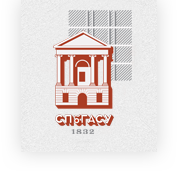Dual Violence of Ecology and Society: A Critical Reading on the Horror of Anthropocene in The Water Knife
DOI:
https://doi.org/10.63313/LLCS.9088Keywords:
Anthropocene, horror, The Water Knife, slow violenceAbstract
Set within a dystopian narrative of water scarcity in a near future America, The Water Knife by Paolo Bacigalupi in 2015 can be regarded as a paradigmatic work of climate fiction, which has received much scholarly attention since its publication. In the trend that Anthropocene is the third wave of western ecocriticism (Zhang 1), this essay applies Sarah Dillon’s theory of Anthropocene horror based on John Clute’s framework of horror narrative structure and Rob Nixon’s "slow vio-lence" to analyze how this cli-fi stages ecological collapse as a system-ic horror. By examining its storylines of the characters Angel Ve-lasquez, Lucy Monroe and Maria, this paper argues that The Water Knife concretizes Dillon’s idea that the Anthropocene as a terror sur-passes traditional horror genres with the characters’ suffering on their body, gender and race by institutional violence as well as ecological collapse. The analysis reveals that Bacigalupi has applied narrative structure, character development, and symbolic imagery to clarify the intersection of ecological crisis and social violence, thereby the fiction provides a new perspective to comprehend the cultural representation of climate anxiety.
References
[1] Zhang, Zhen. (2022) "The Third Wave of Western Ecological Criticism: Anthropocene Discourse and Its Limitations." Social Sciences of Chinese Universities 03: 147-156.
[2] Bacigalupi, Paolo. The Water Knife. New York: Alfred A. Knopf, 2015.
[3] Clark, T. (2020) “Ecological Grief and Anthropocene Horror.” American Imago 77.1, 61-80. https://doi.org/10.1353/aim.2020.0003
[4] Clute, J. ( 2014) “The Darkening Garden: A Short Lexicon of Horror.” Harold Wood: Bec-con Publications,: pp. 269–343.
[5] Crutzen, P. J. (2002) “Geology of Mankind”. Nature 415.23. https://doi.org/10.1038/415023a
[6] Dillon, S. (2018) “The Horror of the Anthropocene.”C21 Literature: Journal of 21st-Century Writings 6(1), 2
[7] https://doi.org/10.16995/c21.38
[8] Jiang, Lifu & Meng, Qinfen. (2018)"Anthropocene: From Geological Concepts to Literary Criticism." Journal of Hunan University of Science and Technology (Social Sciences Edition) 21. 06: 44-51. doi:10.13582/j.cnki.1672-7835.2018.06.007.
[9] Steffen, W., et al. (2011) “The Anthropocene: From Global Change to Planetary Steward-ship.” Ambio40.7: 739–761. https://doi.org/10.1007/s13280-011-0185-x
[10] Nixon, Rob. (2011) “Slow Violence and the Environmentalism of the Poor.” Cambridge and London: Harvard University Press,. https://doi.org/10.4159/harvard.9780674061194
[11] Weik von Mossner, Alexa. (2017) Affective Ecologies: Empathy, Emotion, and Environ-mental Narrative. Columbus: The Ohio State University Press
[12] Thacker, E. (2011) “In the Dust of This Planet.” Washington: Zero Books.
[13] Bonneuil, C & Fressoz, J. B.( 2016 )The Shock of Anthropocene: The Earth, History and Us. Trans. David Fernbach. New York: Verso,.
Downloads
Published
Issue
Section
License
Copyright (c) 2025 by author(s) and Erytis Publishing Limited.

This work is licensed under a Creative Commons Attribution-ShareAlike 4.0 International License.















